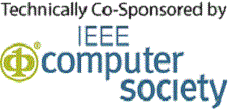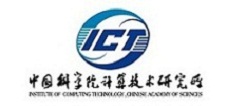Emerging Short-Range Optical Wireless Communications
Instructor: Zhengyuan Xu
National “Thousand Talents Program” Professor,
Department of Electronic Engineering and Tsinghua National Laboratory of Information Science and Technology, Tsinghua University, China Summary
Recent advances in ultraviolet (UV) and white light emitting diode (LED) sources, detectors, and filters provide new opportunities for short range optical wireless communications with low power miniature devices. These include unique non-line-of-sight (NLOS) communications in the solar blind UV band, as well as piggybacking communications on illuminating LEDs.
In this tutorial, we first provide a background overview and history of optical wireless communications. We then turn to characteristics of communication devices, beam propagation and channel modeling for both indoor and outdoor cases. In particular, we look into NLOS UV communications and visible light communications (VLC). They include experimental and analytical path loss results, and demonstration of achievable data rates as a function of several system parameters. Subsequently, we address communication system design issues including modulation, coding, transceivers, diversity techniques, duplexing, and multiple access. We provide analysis of various design tradeoffs in power, rate, communication range, optical pointing geometry, beamwidth, and bit-error-rate. Finally, we discuss open issues and future research directions.
Outline
- History of UV communications
- UV communication devices and their characteristics
- UV beam propagation and scattering channel modeling
- UV communication performance and system design perspectives
- White LED illumination and communication
- Modeling of diffused and reflected beams for communication
- VLC techniques and design considerations
- UV and white LED communication applications
Intended audience
Researchers, engineers, program managers, and graduate students in the field of wireless communications, 4G/LTE cellular networks, and optical wireless systems.
About the Instructor:
Zhengyuan Xu received his B.S. and M.S. degrees in electronic engineering from Tsinghua University, Beijing, China, in 1989 and 1991, respectively, and Ph.D. degree in electrical engineering from Stevens Institute of Technology, Hoboken, NJ, in 1999. From 1991 to 1996, he was with Tsinghua Unisplendour Group Corporation, Tsinghua University, as system engineer and department manager. In 1999, he joined University of California, Riverside, first as Assistant Professor and then tenured Associate Professor and Professor. He was Founding Director of the multi-campus Center for Ubiquitous Communication by Light (UC-Light), University of California. In 2010, he was selected by the “Thousand Talents Program” of China, and appointed as Professor in Department of Electronic Engineering and Tsinghua National Laboratory of Information Science and Technology, Tsinghua University, where he has established Optical Wireless Information Systems (OWisys) Laboratory. His research focuses on wireless communications, networking, optical wireless communication, geolocation, intelligent transportation systems, and signal processing. He has published over 160 journal and conference papers. He has served as an associate editor and guest editor for different IEEE journals in communications, vehicular technology, or signal processing. He also served as a chair, session chair, technical program committee chair and member for numerous international conferences and workshops. He was Founding Chair of IEEE Workshop on Optical Wireless Communications and IEEE International Workshop on Optical Wireless Communications in China, and an elected member of IEEE Signal Processing Society’s Technical Committee on Signal Processing for Communications for several years. Read More https://www.OWisys.com/
Smart Grid Communications and Networking
Instructors:
Zhu Han,
Assistant Prof.,
Dept. of Electrical and Computer Engr.,
University of Houston
Lingyang Song,
Professor,
School of Electronics Engineering and Computer Science,Peking University Summary:
The Smart Grid, regarded as the next generation power grid, uses two-way flows of electricity and information to create a widely distributed automated energy delivery network. A smart grid can be decomposed into the smart infrastructure system, smart management system and smart protection system. In this tutorial, we focus on the use of sensing and communication technologies for better managing, monitoring and protecting future smart grid. We present both the state-of-the-art practice, standardization efforts as well research challenges in these areas.
Outline:
- Overview of Smart grid architecture, subsystems and standardization efforts
- Sensors and communication protocols in smart grid
- Demand side management in smart grid
- Security in smart grid: bad data injection and distributed state estimation
Intended Audience:
Academia, communication engineers, IT managers
About the instructor(s):
Zhu Han received the B.S. degree in electronic engineering from Tsinghua University, in 1997, and the M.S. and Ph.D. degrees in electrical engineering from the University of Maryland, College Park, in 1999 and 2003, respectively. From 2000 to 2002, he was an R&D Engineer of JDSU, Germantown, Maryland. From 2003 to 2006, he was a Research Associate at the University of Maryland. From 2006 to 2008, he was an assistant professor in Boise State University, Idaho. Currently, he is an Assistant Professor in Electrical and Computer Engineering Department at University of Houston, Texas. His research interests include wireless resource allocation and management, wireless communications and networking, game theory, wireless multimedia, and security.
Dr. Han is an NSF CAREER award recipient 2010. Dr. Han is an IEEE Transactions on Wireless Communications since 2010. Dr. Han was the MAC Symposium vice chair of IEEE Wireless Communications and Networking Conference, 2008. Dr. Han was the Guest Editor for Special Issue on Cooperative Networking Challenges and Applications (IEEE Journal on Selected Areas in Communications) Fairness of Radio Resource Management Techniques in Wireless Networks (EURASIP Journal on Wireless Communications and Networking), and Special Issue on Game Theory (EURASIP Journal on Advances in Signal Processing). Dr. Han is the winner of the 2011 IEEE Communications Society Fred W. Ellersick Prize. Dr. Han is the coauthor for the papers that won the best paper awards in IEEE International Conference on Communications 2009 and 7th International Symposium on Modeling and Optimization in Mobile, Ad Hoc, and Wireless Networks (WiOpt09). Dr. Han is an IEEE Senior Member.
Lingyang Song (Professor/PhD) received his PhD from the University of York, UK, in 2007, where he received the K. M. Stott Prize for excellent research. He worked as a postdoctoral research fellow at the University of Oslo, Norway, and Harvard University, until rejoining Philips Research UK in March 2008. In May 2009, he joined the School of Electronics Engineering and Computer Science, Peking University, China, as a full professor. His main research interests include MIMO, OFDM, cooperative communications, cognitive radio, physical layer security, game theory, and wireless ad hoc/sensor networks.
He is co-inventor of a number of patents (standard contributions), and author or co-author of over 100 journal and conference papers. He received the best paper award in IEEE International Conference on Wireless Communications, Networking and Mobile Computing (WiCOM 2007), and the best paper award in IEEE Wireless Communication and Networking Conference (WCNC2012). He is the co-editor of two books, “Orthogonal Frequency Division Multiple Access (OFDMA)-Fundamentals and Applications” and “Evolved Network Planning and Optimization for UMTS and LTE”, published by Auerbach Publications, CRC Press, USA.
He is currently on the Editorial Board of IET Communications, International Journal of Communications, Network and System Sciences, and International Journal of Smart Homes. He was a guest editor of Wireless Communications and Mobile Computing (Wiley Publication), Special Issues on “Emerging Techniques for Wireless Vehicular Communications” and “Innovative Communications for a Better Future”, and a guest editor of Elsevier Computer Communications, Special Issue on “Adaptive Multicarrier Communications and Networks”, a guest editor of EURASIP Journal on Wireless Communications and Networking, Special Issue on “OFDMA Architectures, Protocols, and Application”.
He served as the TPC co-chairs for the International Conference on Ubiquitous and Future Networks (ICUFN2011 and ICUFN2011), the International Workshop on Planning and Optimization for Wireless Networks (PlanNet 2009-2011), the International Workshop on Cognitive Communications (CogCom 2008 and 2009), and the International Workshop on Wireless Pervasive Healthcare (WiPH 2009). He served as symposium co-chair for “Cross-Layer Optimized Wireless Networks Symposium” in the International Wireless Communications and Mobile Computing Conference (IWCMC 2009 and 2010), and “Wireless Communication Theory” in IEEE International Conference on Communication Technology (ICCT 2011), and registration co-chair in IEEE International Conference on Communications in China (ICCC2012), Beijing, China, Aug. 2012. He served as a member of Technical Program Committee in various conferences including ICC, Globecom, VTC, WCNC, PIMRC, ICCCN, etc.
He is a senior member of IEEE.








































